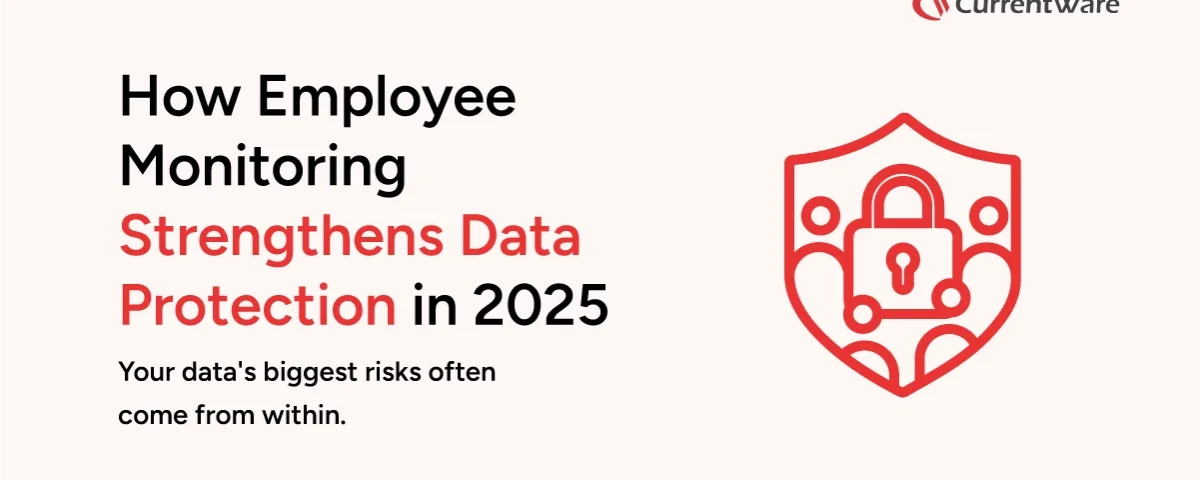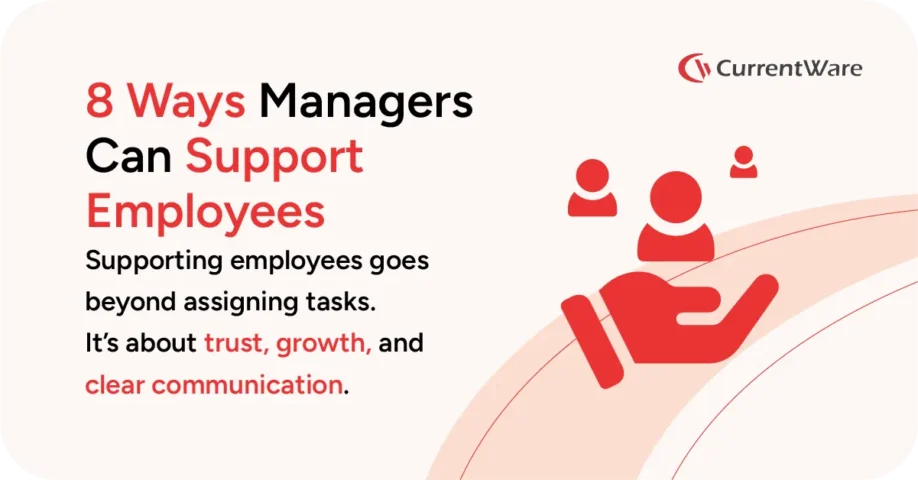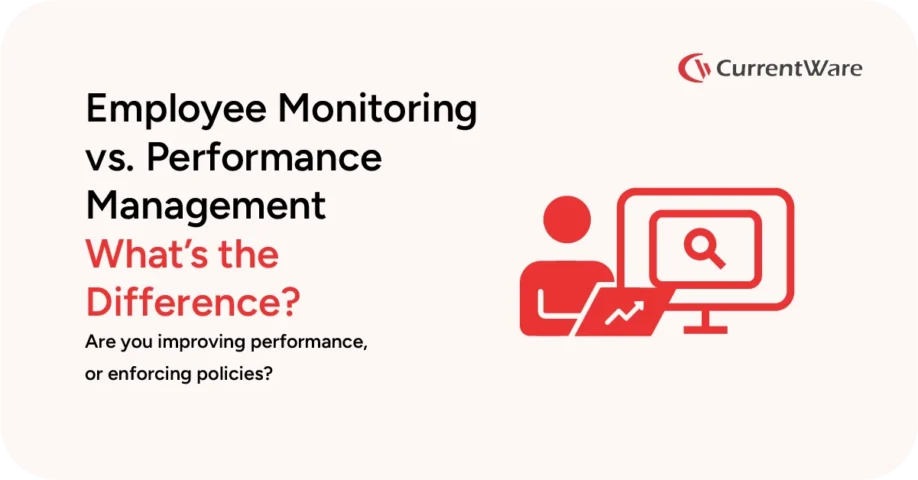How Employee Monitoring Strengthens Data Protection in 2025

Table of Contents
- Introduction: The Internal Threat Landscape
- Why This Matters Now in 2025
- What Is Employee Monitoring?
- What Is Data Protection?
- How Employee Monitoring Enhances Data Protection
- 4 Practical Ways to Use Employee Monitoring
- Legal and Ethical Considerations
- Best Practices for Ethical Monitoring
- Frequently Asked Questions (FAQs)
- Final Takeaway
The average cost of a data breach has reached $4.45 million globally (IBM, 2023).
While most organizations invest heavily in firewalls, endpoint protection, and network monitoring, those defenses focus almost entirely on keeping threats out.
The reality is different: over 70% of breaches involve human error or misuse. That means many of the most serious risks are already inside your systems.
This is where employee monitoring data protection strategies make a difference. By tracking how people interact with company data in real time, you can detect and respond to potential threats long before they escalate.
Why This Matters Now
In 2025, security teams face three converging challenges:
1. Hybrid and remote work have extended the attack surface beyond controlled office environments.
2. SaaS sprawl has created blind spots in how and where sensitive data is accessed.
3. Regulatory pressure is increasing, with GDPR, HIPAA, and CCPA enforcement tightening.
Without visibility into user activity, you can’t detect early signs of insider threats, policy violations, or accidental data leaks.
Also Read: Endpoint Security Software—Monitor & Restrict Employee PCs
What Is Employee Monitoring?
Employee monitoring is the practice of tracking and analyzing user activity on company-owned devices, applications, and networks.
Modern employee monitoring software is designed to support three main objectives:
• Security – Detecting risky actions before they become breaches
• Productivity – Understanding how tools are being used
• Compliance – Maintaining logs and evidence for audits
Example: If an employee uploads sensitive client data to a personal cloud drive, monitoring tools can immediately alert IT so they can block the transfer.
CurrentWare offers a privacy-focused suite for this purpose:
• BrowseReporter – Website and application usage tracking
• AccessPatrol – USB and peripheral device control
• BrowseControl – Web filtering for risky or non-compliant sites
Gartner research shows that organizations using such monitoring see up to a 30% improvement in insider threat detection.
Tips for preventing social isolation in remote teams:
• Organize informal virtual gatherings like coffee breaks, lunch sessions, or online games. These casual meetings help team members connect and talk about non-work topics, just like spontaneous office conversations.
• Use specific communication channels on platforms like Slack or Teams for non-work discussions, hobbies, or interest groups to create the “water cooler” effect and encourage informal interactions.
• Encourage everyone to turn on their cameras during meetings. Seeing faces and expressions builds a stronger sense of connection and helps reduce loneliness.
• Schedule regular team check-ins, both in groups and one-on-one, allowing time for social interaction and not just task updates.
• Recognize and celebrate achievements as a team through virtual shout-outs, recognition programs, or company-wide online events. This approach helps employees feel valued and connected to the organization.
• Occasionally offer in-person meetups or coworking opportunities for those in the same region, if circumstances and budgets allow, to enhance virtual connections.
Also Read: Software License Optimization with Cost Insights by CurrentWare
What Is Data Protection?
Data protection covers all processes, tools, and policies that safeguard company, customer, and employee information against loss, theft, or misuse.
It’s both a security necessity and a legal obligation. Regulations like GDPR, HIPAA, and CCPA require businesses to prove that they protect sensitive information appropriately.
Failure to meet these standards can lead to:
• Fines – GDPR penalties can exceed €20 million
• Reputation damage – Loss of trust from customers and partners
• Operational disruption – Investigations can halt critical work
Verizon’s 2023 DBIR found that 75% of U.S. companies remain at high risk, often due to a lack of visibility into how their data is handled internally.
Also Read: Data Loss Prevention Software—Endpoint DLP Solutions
How Employee Monitoring Enhances Data Protection
Firewalls and encryption keep attackers out. Employee monitoring adds an internal defense layer, watching the point where users interact with sensitive data.
Real-Time Alerts on Risky Activity
AccessPatrol blocks unauthorized USB connections and notifies administrators instantly.
BrowseControl prevents access to websites known for data exfiltration or malware.
SaaS and Software Usage Insights
BrowseReporter tracks both licensed and shadow IT tools in use.
Cost Insights highlights unused or unapproved software, which can be both a cost burden and a security risk.
Flexera’s 2023 report found that 48% of software spend is wasted often on unmanaged tools.
Behavioral Anomaly Detection
By establishing baselines, monitoring can flag:
• Off-hours logins
• Large file transfers
• Sudden spikes in cloud storage usage
These patterns often indicate early stages of a data breach.
Shadow IT and Unauthorized Sharing Control
Monitoring uncovers unapproved software and file-sharing services before they become serious risks.
Audit trails provide evidence to enforce data security policies.
Also Read: Ultimate Guide to Software License Management with Cost Insights
1. Set Alerts for Suspicious Behavior
Use AccessPatrol to flag and block USB activity that violates policy. Pair it with BrowseReporter to detect visits to restricted websites or unusual behavior patterns.
2. Limit Access Based on Actual Usage
Audit software use with BrowseReporter and Cost Insights. Remove licenses for unused tools and block high-risk applications with BrowseControl.
3. Secure Remote and BYOD Workflows
When teams work outside the office, endpoint visibility becomes critical. Monitoring ensures data security policies apply regardless of location or network.
The Stanford/Tessian study shows 70% of breaches stem from employee mistakes — a risk amplified by remote work.
4. Detect Early Insider Threats
Correlate activity from BrowseReporter and AccessPatrol to spot patterns like repeated off-hours access or large file movements.
Ponemon Institute reports that ~25% of breaches involve insiders.
Also Read: Employee Monitoring Software for Productivity & Security
Poorly executed monitoring can create as many problems as it solves.
Without a clear framework, you risk breaching privacy laws, eroding employee trust, and inviting regulatory penalties.
Responsible employee monitoring means:
• Transparency – Employees should know what’s monitored, why it’s necessary for data security, and how it protects the organization.
• No invasive practices – Avoid methods like keylogging or covert webcam use, which harm trust without adding meaningful security.
• Proportionate monitoring – Match the scope of tracking to business risk and data sensitivity.
• Built-in compliance – Ensure monitoring aligns with local labor and privacy laws from the start.
CurrentWare’s privacy-by-design approach includes:
• No stealth surveillance or keylogging
• Acceptable Use Policy acknowledgment prompts
• Configurable settings to meet region-specific compliance requirements
Done right, monitoring isn’t about “watching employees” - it’s about creating a culture where security is shared responsibility.
Also Read: Platform Security Overview | CurrentWare UAM, Web Filtering, and DLP
Rolling out monitoring without context can turn a security measure into a morale problem.
These best practices ensure you protect your data while keeping your team on board.
1. Communicate early and openly
Before implementation, explain what will be monitored, why, and how it benefits both the company and employees. This prevents pushback and builds understanding.
2. Tailor monitoring to real risk
Not every department needs the same level of oversight. High-sensitivity areas like finance or R&D require stricter controls than roles handling only public-facing data.
3. Pair technology with training
Monitoring works best alongside cybersecurity training. Teach employees how to spot phishing, handle data correctly, and use approved tools.
4.Keep policies current
Review and update monitoring policies regularly to ensure they match evolving laws and security needs. Outdated policies can be as risky as none at all.
5. Focus on prevention, not punishment
Use monitoring insights to close security gaps and strengthen processes, not to penalize employees for small mistakes. This keeps the focus on data protection over discipline.
Also Read: BrowseReporter Employee Monitoring Software—Track PC Use
Final Takeaway
In today’s security environment, employee monitoring data protection is not optional.
It’s a proactive way to protect sensitive information, meet compliance obligations, and detect threats early all while maintaining employee trust.


